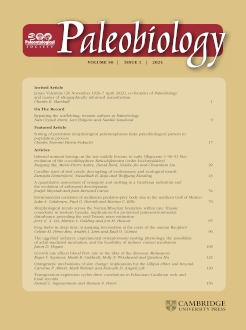The Mississippi River delivers tremendous amounts of freshwater and nutrients to the northern Gulf of Mexico, which results in the explosive growth of phytoplankton populations that are typically nutrient limited. Decomposition of phytoplankton blooms by aerobic bacteria can deplete oxygen concentrations in coastal systems, leading to the establishment of oxygen-limited “dead zones.” Changes in the availability of food and dissolved oxygen, as well as changes in temperature, can have wide-reaching effects on coastal food webs. Here, we investigate how primary productivity, dissolved oxygen, and sea-surface temperature affect the sizes of molluscan predators and prey in the northern Gulf of Mexico using collections of shells preserved in seafloor sediment on the continental shelf. We find that the size of bivalves, and the frequency of predatory drilling by snails, are most affected by dissolved oxygen: prey size increases and drilling predation decreases with decreasing concentrations of dissolved oxygen. Sea-surface temperature is positively associated with the size of both molluscan predators and prey. In contrast, net primary productivity has little direct association with size, and the predator-to-prey size ratio also does not vary consistently with environmental conditions in the northern gulf. Larger bivalves in areas with lower oxygen could reflect reduced pressure from predators and, consequently, greater life spans. Larger predator and prey sizes in warmer waters may reflect more optimal conditions for growth. The shells of recently deceased bivalves, and the associated traces of drilling snails on those shells, can be used to investigate long-standing hypotheses about the roles of environmental variation in body-size evolution through geologic time. Furthermore, future studies comparing these historical data with data from present-day communities may help us understand how coastal food webs are changing in response to various human activities.
The Mississippi River watershed drains 40% of the continental United States, and the tremendous primary productivity in the adjacent north-central Gulf of Mexico has created one of the most extensive dead zones on Earth. In contrast, smaller watersheds deliver fewer nutrients to the northeastern gulf, and consequently, productivity is limited and hypoxia is uncommon. How has variation in primary productivity, oxygen availability, and sea-surface temperature affected coastal food webs? Here, we investigate environmental controls on the size of molluscan predators and prey in the northern Gulf of Mexico using Holocene death assemblages. Linear mixed models indicate that bivalve size and the frequency of drilling predation are affected by dissolved oxygen concentrations; drilling frequency declines with declining oxygen, whereas bivalve size increases. In contrast, sea-surface temperature is positively associated with the size of molluscan predators and prey. Net primary productivity contributes relatively little to predator or prey size, and predator-to-prey size ratios do not vary consistently with environmental conditions across the northern gulf. Larger bivalves in areas of oxygen limitation may be due to decreased predation pressure and, consequently, greater prey longevity. The larger size of bivalves and predatory gastropods in warmer waters may reflect enhanced growth under these conditions, provided dissolved oxygen concentrations exceed a minimum threshold. Holocene death assemblages can be used to test long-standing hypotheses regarding environmental controls on predator–prey body-size distributions through geologic time and provide baselines for assessing the ongoing effects of anthropogenic eutrophication and warming on coastal food webs.






